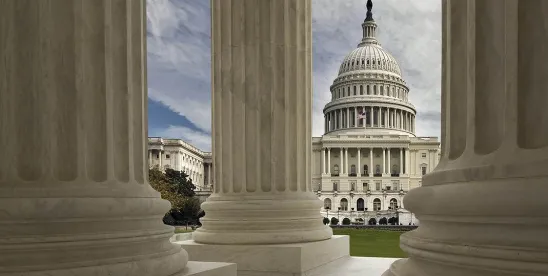The Congressional Review Act (CRA) provides the 119th Congress with a special procedure to overturn regulations finalized in the final months of President Biden’s term. But the window for action is limited.
The CRA applies to all final rules, broadly defined. The statute requires federal agencies to report new rules to Congress. After receiving such a report, members of either or both chambers may introduce a joint resolution to overturn the rule. If both the House and Senate pass a CRA joint resolution of disapproval and the president signs it – or if Congress successfully overrides a presidential veto – the rule at issue cannot go into effect or continue in effect. The statute also prohibits the agency from reissuing a rule or issuing a new rule that is “substantially the same” unless specifically authorized by a subsequently enacted law.
Senate Fast-Track Procedure
Members of Congress introduce a joint resolution of disapproval the same way as they would any other measure. Because the House can move quickly to consider any type of legislation, the CRA does not provide any special procedures for consideration in that chamber. But the Senate operates under more time-consuming procedural rules. In recognition of that difference, the CRA provides a fast-track procedure for Senate consideration of joint resolutions of disapproval.
Once introduced, the joint resolution is referred to the Senate committee with jurisdiction over the relevant issue. That committee may report out the measure, but it may not amend it. If the committee takes no action, then after the expiration of a 20-calendar-day period, counted from the day that both the House and the Senate received the rule and referred it to a committee, 30 Senators may sign a petition that discharges the joint resolution from further consideration by the committee.
Once the committee reports the joint resolution or is discharged, any Senator may offer a non-debatable motion to proceed to floor consideration, subject to a simple majority vote of approval. Debate is limited to 10 hours, and no amendments are permitted. Passage of the joint resolution requires a simple majority vote (as compared to the 60-vote threshold usually required to move legislation through that chamber).
Timing Constraints
Members of Congress must introduce a CRA joint resolution of disapproval within 60 session days, in the case of the Senate, or 60 legislative days, in the case of the House, calculated as of the date that both the House and the Senate received the published rule and referred it to committee. Determination of the period for introduction counts weekends and holidays but excludes days that either chamber is adjourned for more than three days. In recent years, Congress has opted to hold pro forma sessions during periods of absence lasting three or more days, effectively making the introduction period 60 calendar days.
The CRA extends the introduction period for rules issued late in a session of Congress (commonly referred to as midnight rules). When an agency submits a report to Congress less than 60 session/legislative days before that Congress adjourns a session sine die and the succeeding session convenes, the calculation of the introduction period restarts in the next session. In such circumstances, the rule is treated as though Congress received the report on the published rule on the 15th session/legislative day of the new session – this year, that date is January 24, 2025. The Senate Parliamentarian has determined that the lookback period began on August 16, 2024, for rules submitted in the second session of the 118th Congress, which ended on January 3, 2025.
The CRA allows for use of the Senate fast-track procedure outlined above only if the chamber acts on a properly introduced disapproval resolution within 60 session days, again calculated as of the date that both chambers of Congress have received the published rule and referred it to committee. The Senate may still consider a joint resolution after that deadline passes, but it must do so pursuant to usual Senate rules, making passage significantly more difficult. The Senate Parliamentarian has the final say with respect to determination of this and all other applicable deadlines and time periods.
Legislative Efforts to Expand the CR
Each CRA resolution applies to only one rule in its entirety. Last year, members of Congress introduced companion bills, titled the Midnight Rules Relief Act, that would allow the disapproval of multiple regulations under a single joint resolution. That bill did not become law, but it remains a priority for the Freedom Caucus, a group of conservative House Republicans.
Historical Use and Political Outlook
Successful use of the CRA to disapprove a rule is historically rare. For obvious political reasons, the process is most effectively employed in presidential transition years, when the White House and both chambers of Congress shift to the opposing party. Since enactment of the statute in 1996, Congress has used it to overturn just 20 rules. Sixteen of those were disapproved by Congress during the first months of President Donald Trump’s first term.
Following their sweep in the last election, Republicans indicated their intent to use the CRA this year to target as many Biden administration rules as possible. Former Senate Republican Leader Mitch McConnell said last year that Republicans have a “crystal clear mandate” to undo Biden administration rules, referencing the CRA as a tool to “hit the brakes on runaway regulation.” Rep. Andy Harris (R-MD), leader of the House Freedom Caucus, has stated that the GOP will target “anything that the [Biden] administration has done in the last days of” his term.
More than 1,300 rules could be subject to the CRA disapproval process. The George Washington University Regulatory Studies Center maintains an exploratory dashboard tracking final rules that might be subject to CRA disapproval.
Conclusion
The CRA offers a powerful tool for Congress to overturn certain executive branch regulations.




 />i
/>i

